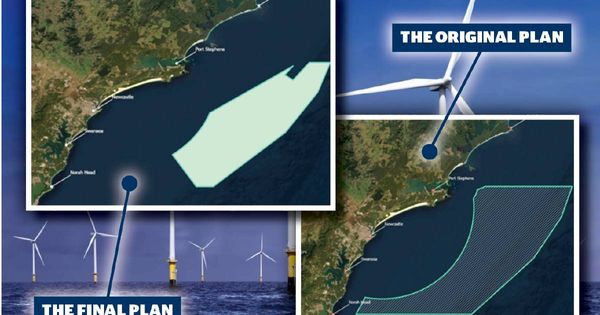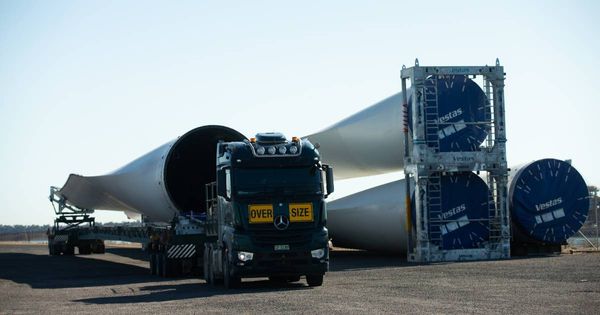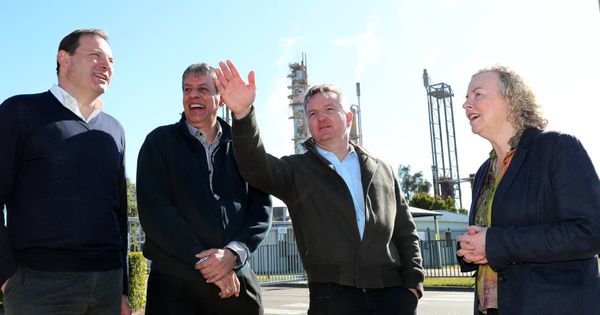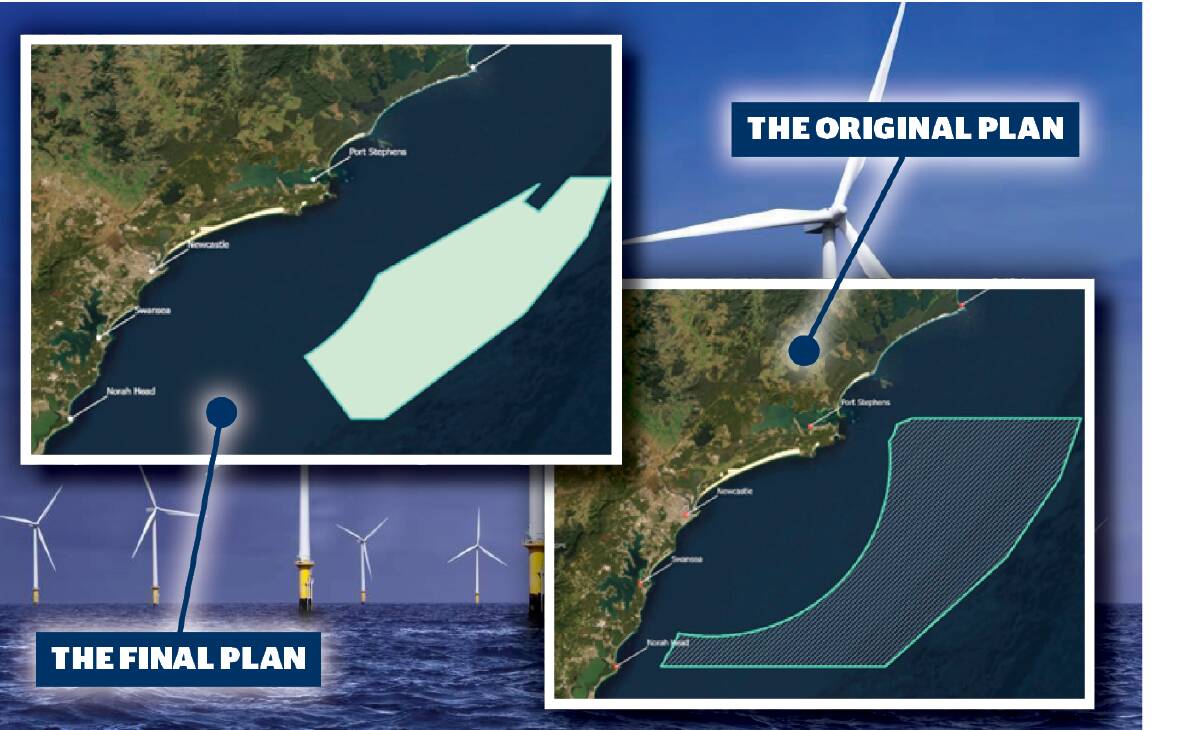
Climate Change and Energy Minister Chris Bowen has dismissed warnings about the viability of the Hunter's deep-water floating wind farms as at least two proponents prepare to lodge licence applications.
Mr Bowen said in Newcastle on Thursday that the government had been "overwhelmed with interest" after formally declaring the nation's first two offshore wind zones at Gippsland in Victoria and the Hunter.
Net Zero Australia, a collaboration between Melbourne, Queensland and Princeton universities and international management consultancy Nous Group, published a study on Wednesday which predicted offshore wind would be an important energy source in the nation's transition to zero emissions by 2050.
But the study found none of its six modelled scenarios "chose" NSW as an offshore wind location because of the "high cost of floating platform technologies and moderate winds".
The Hunter's wind turbines will float in deep water, unlike off Gippsland, where turbines will be planted in the sea bed closer to shore.
"Offshore wind faces the highest barriers due to the need for large subsidies and long lead times to develop initial projects, establish supply chains and provide grid access," the study said.
Mr Bowen said Australia's offshore wind zones had attracted "plenty of proponents who would beg to differ".
"We are being overwhelmed with interest on offshore wind," he said.
"There is not an offshore wind company in the world that isn't looking to Australia as one of their key markets for development, so they think it's viable, the government thinks it's viable."
The government announced on Wednesday that the Hunter's five-gigawatt offshore wind zone would cover 1800 square kilometres from Nelson Bay to Swansea, about 1000 square kilometres less than first proposed in February.
The government will open applications next month for feasibility licences for the Hunter zone, which is expected to accommodate two or three operators and a total of 200 to 300 turbines.
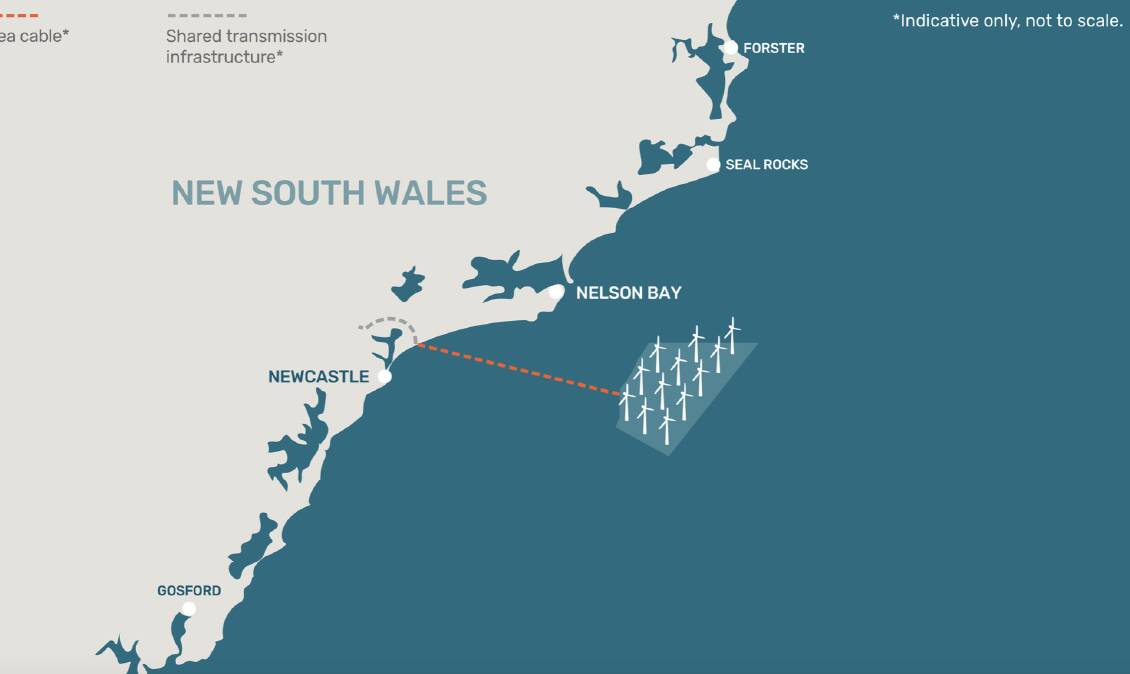
Oceanex founder Andy Evans told the Newcastle Herald on Thursday that the smaller zone would not have a significant impact on investor appetite for the project.
"The great thing that the minister has done is open Australia for business," he said.
"There's going to be a domino effect. A number of parties have bid in Gippsland, about 37 applications from about 25 or 26 applicants.
"I think there's only going to be four to five licences, so you're going to get all these companies missing out who go on to the next region, which is the Hunter.
"A number of parties are going to move from zone to zone to zone."
Seven companies registered expressions of interest in offshore wind with the NSW government last year.
"You're going to get a lot more than that," Mr Evans said.
Mr Bowen said he expected some of the Gippsland proponents would apply in the Hunter regardless of whether they were granted licences in Victoria.
The government has set a 260-metre height limit for turbines off the Hunter coast due to concerns about aircraft activity from Williamtown RAAF base.
Mr Evans said the height cap could "limit Australia having the latest technology", but Mr Bowen said the proponents would "work with the rules the government has put out".
BlueFloat Energy, the company behind the proposed Eastern Rise Offshore Wind Project in the Hunter, said on Thursday that it would apply for a feasibility licence.
The company plans to build a wind farm with up to 115 turbines and three offshore substations about 25 to 45 kilometres off the coast between Newcastle and Nelson Bay.
"This is a fantastic step towards Australia's clean energy future, and we look forward to having the opportunity to submit a feasibility licence application and start working to create jobs and provide clean energy for the Hunter region," BlueFloat Australian country manager Nick Sankey said.
The licences will give proponents exclusive rights to parts of the zone for seven years to help attract investors and prepare environmental assessments.
Mr Bowen reiterated on Thursday that he wanted the wind farms to start producing power by 2030, when the government hopes to reach its renewable electricity generation target of 82 per cent.






